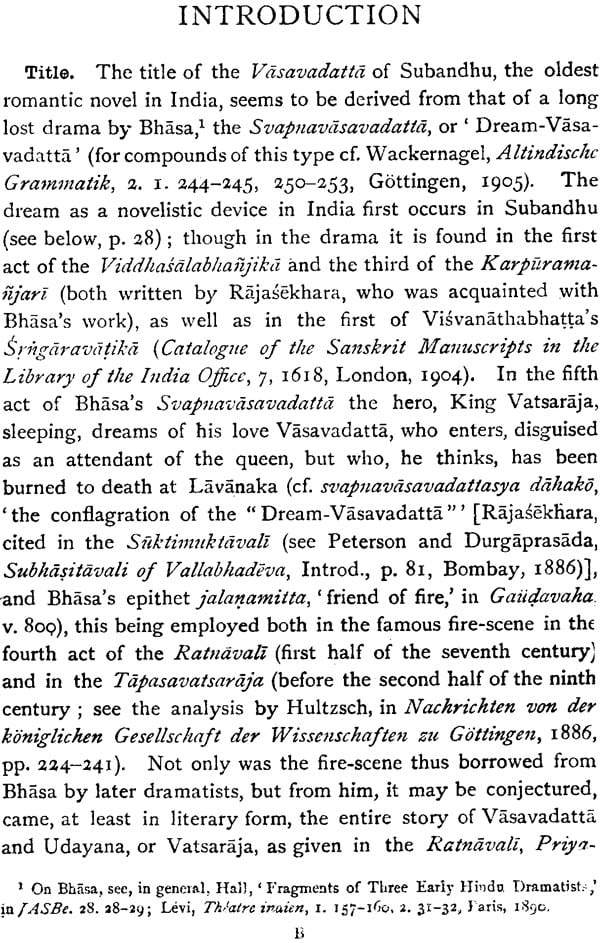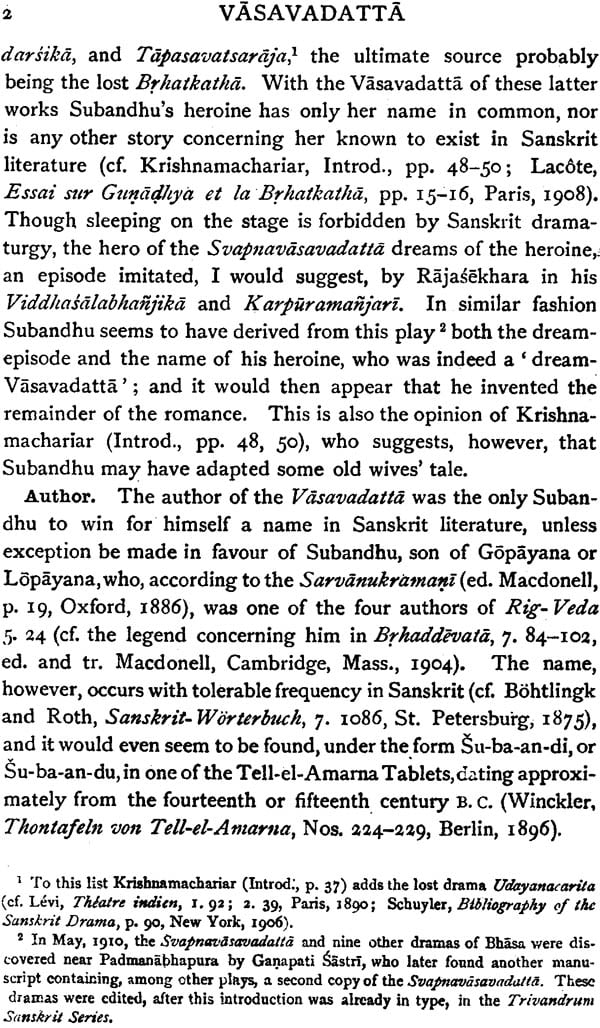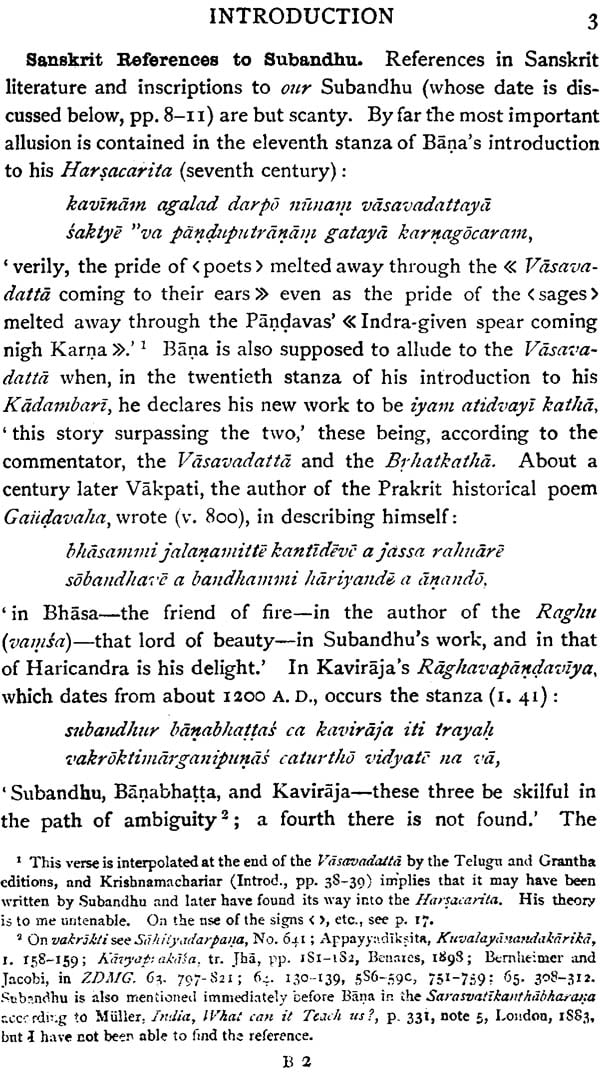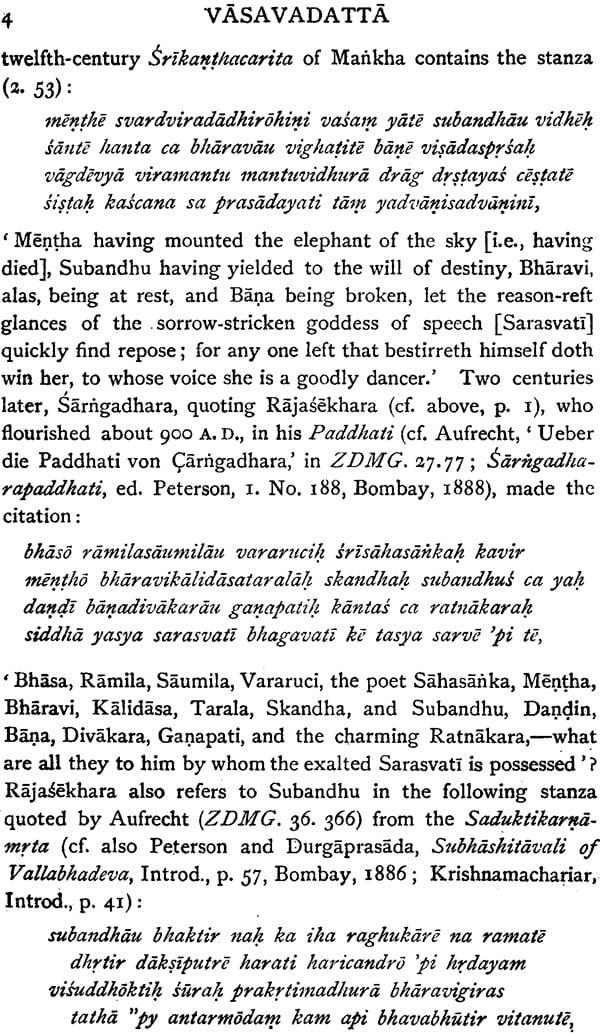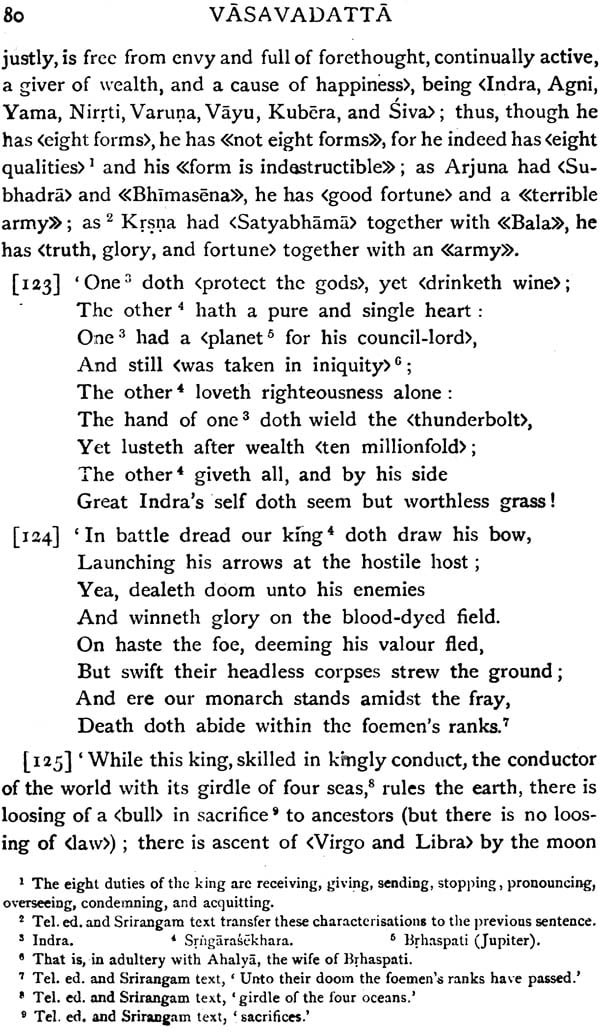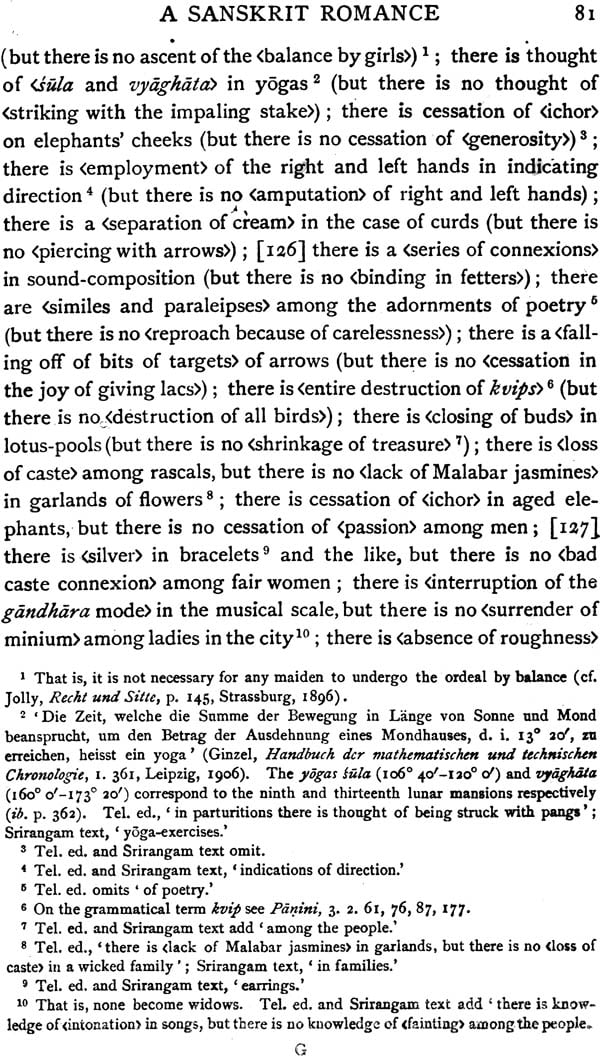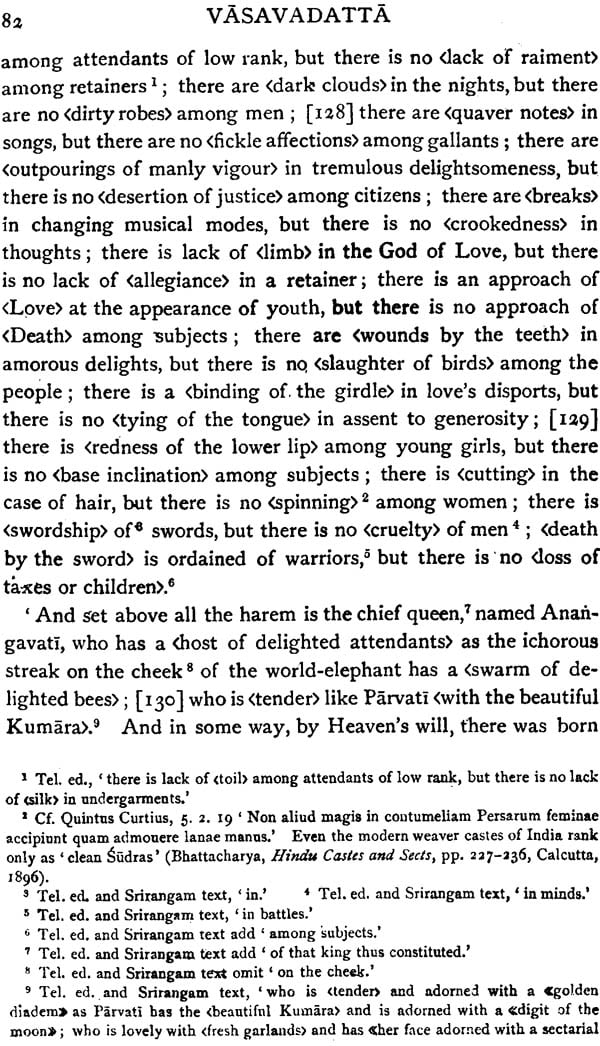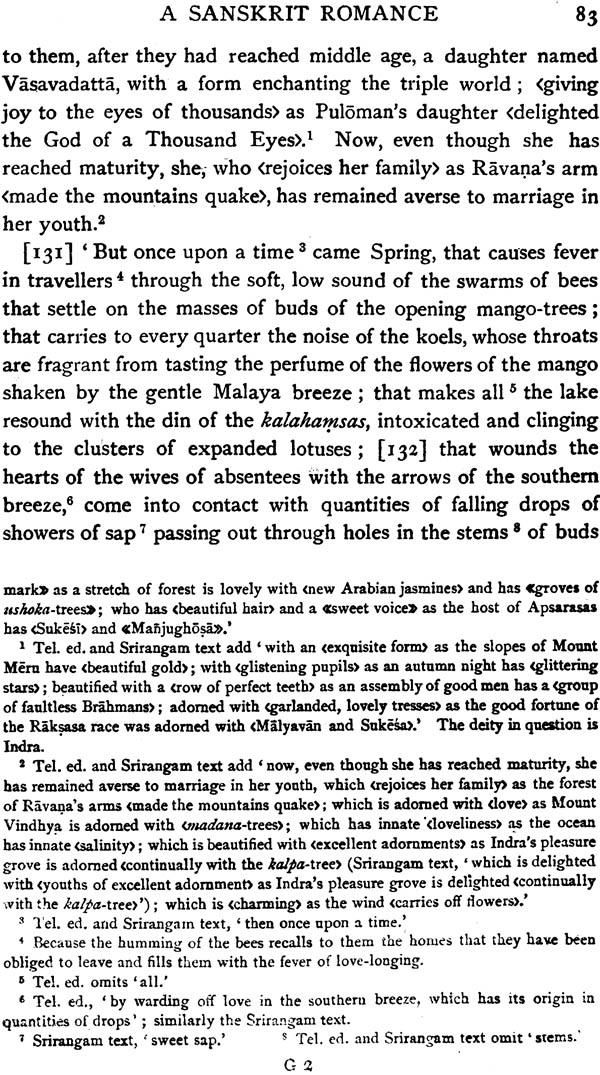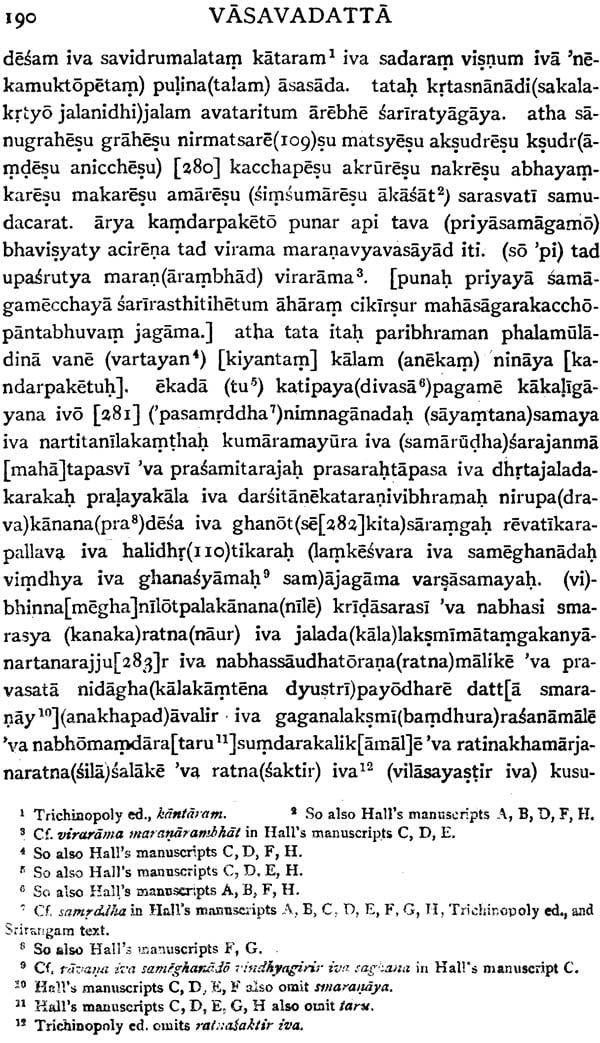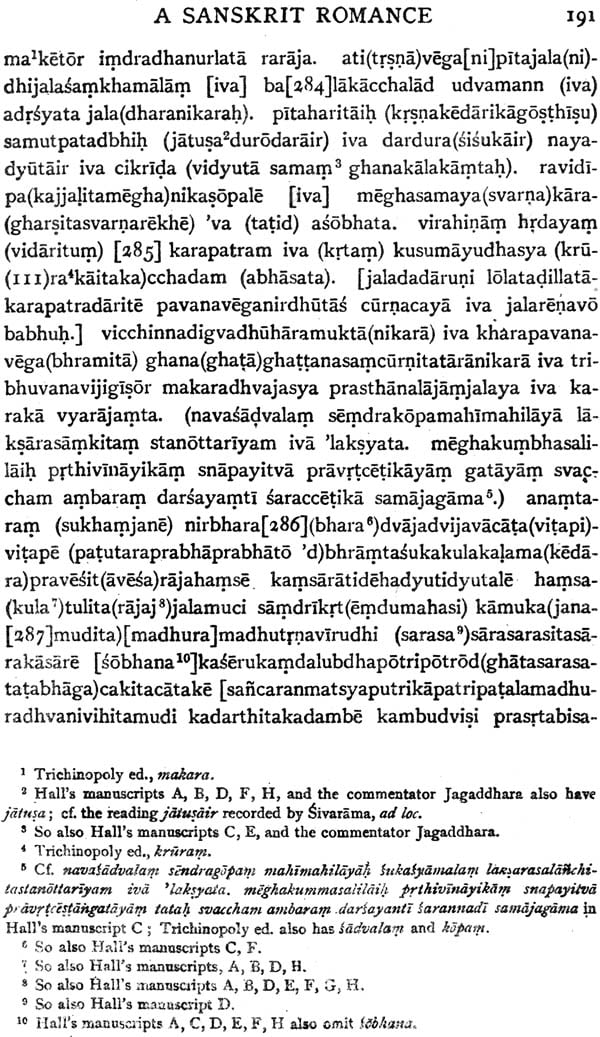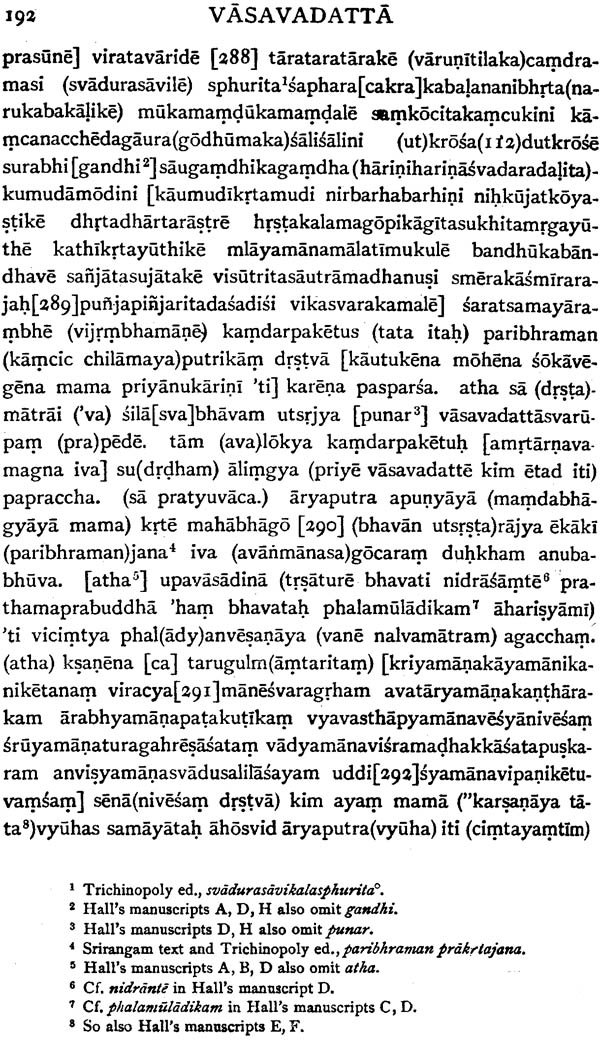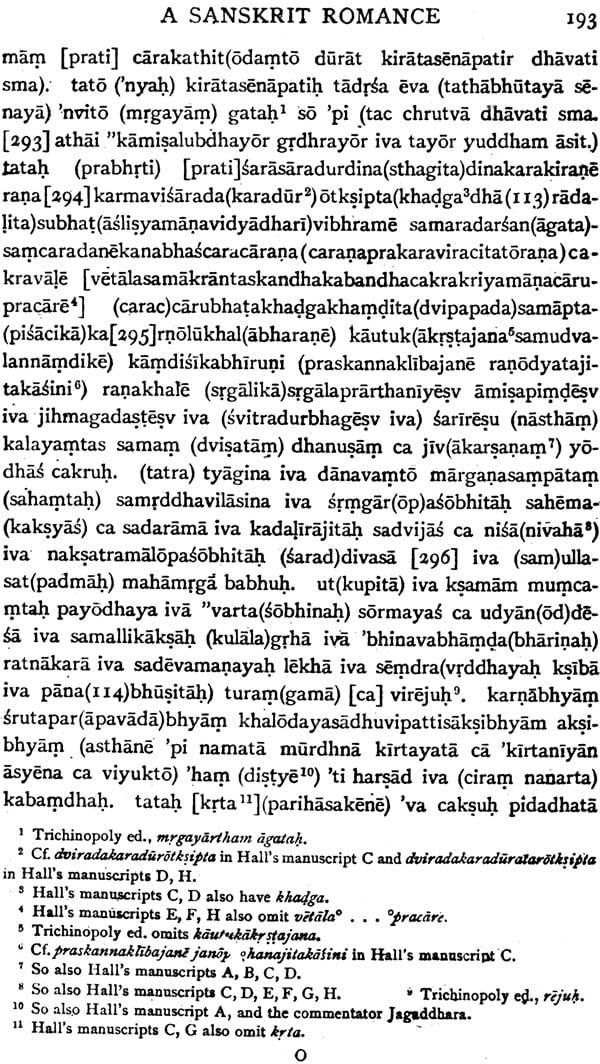
Subandhu's Vasavadatta A Sanskrit Romance
Book Specification
| Item Code: | IDJ456 |
| Author: | Louis H. Gray |
| Publisher: | MOTILAL BANARSIDASS PUBLISHERS PVT. LTD. |
| Language: | (Translated with an Introduction and notes by) |
| Edition: | 1999 |
| ISBN: | 9788120816756 |
| Pages: | 227 |
| Cover: | Paperback |
| Other Details | 8.4" X 5.4" |
| Weight | 250 gm |
Book Description
Preface
The precept of Horace, nonum premature in annum, has been more than obeyed in this volume, for it was on November 3, 1901, that I began the translation of the Vasavadatta. From that day Subandhu's romance has never been long absent from my thoughts, although many practical exigencies, some of them not wholly agreeable to a scholar, have forced me again and again to lay the task aside, often for six months at a stretch. Yet thee clouds, too, have had their silver lining, for not only has my work thus had time to ripen, but much has appeared bearing on the novel during these intervals, or has been called to my attention by friends. The first draft of the translation was, for example, almost completed when, in March, 1903, Dr. George C.O. Hass noted for me an entry in a catalogue of Stechert, of New York, which enabled me to purchase a copy of the edition of the Vasavadatta printed in Telugu script at Madras in 1862. This necessitated a renewed study of the text in comparison with the edition of Hall and ultimately led me to include a transliteration of the 'southern' recension in my work, together with the variants of all the other editions. Some of these would have been inaccessible to me, had it not been for the courtesy of the India Office, which, at the instance of Mr. F.W. Thomas, its librarian, most generously loaned me the texts I needed, so that I might use them at leisure in my own study.
Excepting the blank-verse renderings of the few Sanskrit stanzas of the Vasavadatta, I have sought to make the translation as literal as the English language would permit, and throughout I have spared no pains to facilitate reference to the original text, as well as to explain each allusion that I could elucidate. In the latter regard I have considered others than professed Sanskritists, for I have ventured to hope that some copies of the work may fall into the hands of students of literature, who may here find points of similarity to, or divergence from, the writings to which their special attention may be directed. I dare not flatter myself that I have invariably hit the true meaning of the original, for there are passages which repeated study, through these eleven years, has failed to solve to my own complete satisfaction. But even for this I scarcely grieve, for, like Propertius, I feel, Quod si deficient uires, audacia certe Laus erit: in magnis et uoluisse sat est
And if the cruces that have baffled me shall be solved by other minds, none will feel greater joy in their success than I.
It is with a feeling almost akin to regret that I lay down my pen. Perhaps to me the Vasavadatta has deeper associations than to almost any one else who has laboured on it. In hours of bitterness and sorrow it has helped me to forget; and it has heightened the pleasure of happy days. With all its faults, I love it; possibly, too, the innate Anglo-Saxon sympathy for the 'under dog' has made me only the more determined in its praise. Is it worth while, or not? As the Arabs say, Allahu a 'lamu, 'God best knows (and man can't tell).'
I am happy to have had, in my work, the assistance of many friends Mr. Thomas and Dr. Haas, to whom I have already alluded; others to whose courtesies reference will be made in the course of the book-Dr. George A. Grierson, Professor Theodor Zachariae, Mr. Richard Hall; Professor Washburn Hopkins; whose note aided in introducing me to the mysteries of Grantha script; Professor Charles R. Lanman, who enabled me to use the Harvard copy of Hall's edition until I could procure my own a courtesy which had already been accorded me for a year previous by the library of the Deutsche Morgenlandische Gesellschaft; Mr. T.K. Balasubrahmanya, who replied in full to my queries concerning the 'southern' text; and Mr. G. Payn Quackenbos, who called my attention to the reference to Subandhu in the Subhasitaratnabhandagara, while to Dr. Charles J. Ogden I am indebted for a number of helpful suggestions and corrections, particularly in the Introduction. In a very special way my thanks are due also to Mr. Alexander Smith Cochran, whose interest in the Columbia University Indo-Iranian Series has rendered possible the printing of this particular volume.
My gratitude to my friend and teacher, Professor A.V. Williams Jackson here editor as well is more fittingly expressed elsewhere within these covers. Suffice it to say that he read with me word by the second of the three drafts of this translation, and that wellnigh every page bears some taken of his careful scholarship. And to one other my wife my deepest obligations are due for whatsoever may be best in my work. She has subjected every line to a most minute and unsparing revision, besides taking upon herself the arduous task of preparing my manuscript for the press. Her interest in the work has never faltered, and to her criticism, at once most kindly and most severe, I owe more than I can tell.
About the Book
The romance is one of the best examples of the artificial and ornate style in Sanskrit prose. The title is derived from that of a drama by Bhasa, the Svapnavasavadattam .
Subandhu's translator has generously and not without justice claimed for him a true melody in the rolling compounds, a sesquipedalian majesty which can never be equalled except in Sanskrit, a lulling music in the alliterations, and a compact brevity in the paronomasias which are in most cases veritable gems of terseness and twofold appropriateness. Besides the translation, the volume also contains, the transliterated text of the South Indian recension, which differs to a noteworthy degree from that of Hall, and a bibliography. The relations of the Sanskrit romance to the occidental, especially the Greek, has also been discussed in the introduction, and the notes include parallels of incidents in modern India and other folk-tales, as well as points of resemblance with other Sanskrit romances.
Back of the Book
This is a message poem (Dutakavya) in the tradition set by Kalidasa's famous Sanskrit poem Meghaduta composed in Apabhramsa by a Muslim poet of the thirteenth century. The Nayika here is a beautiful young woman of Vijayanagara whose beloved husband left her on business and has not returned, and the messenger is a traveller on his way from Multan to Cambay, a place where coincidentally her lover has gone.
Jayadeva's dramatic lyrical poem Gitagovinda is a unique work in Indian literature and a source of inspiration in both medieval and contemporary Vaisnavism. It concentrates on Krsna's love with the Cowherdess Radha. Intense earthly passion is the example Jayadeva uses to express the complexities of divine and human love.
The poetry of Ghanananda depicts love in all its aspects. Breaking away from the orthodox poetic traditions he gave Hindi poetry spontaneity and freshness and brought it nearer to life. Ghanananda's descriptions of the meeting and separation of lovers are the noblest reaches of Hindi love poetry. Neglected in his own times he has in recent years been given the recognition he deserves as one of the outstanding poets of Hindi love poetry.
| Preface | vii | |
| Abbreviations | xii | |
| Introduction | 1 | |
| Translation | 43 | |
| Transcription | 143 | |
| Bibliography | 197 | |
| Lexicographical Appendix | 200 |
